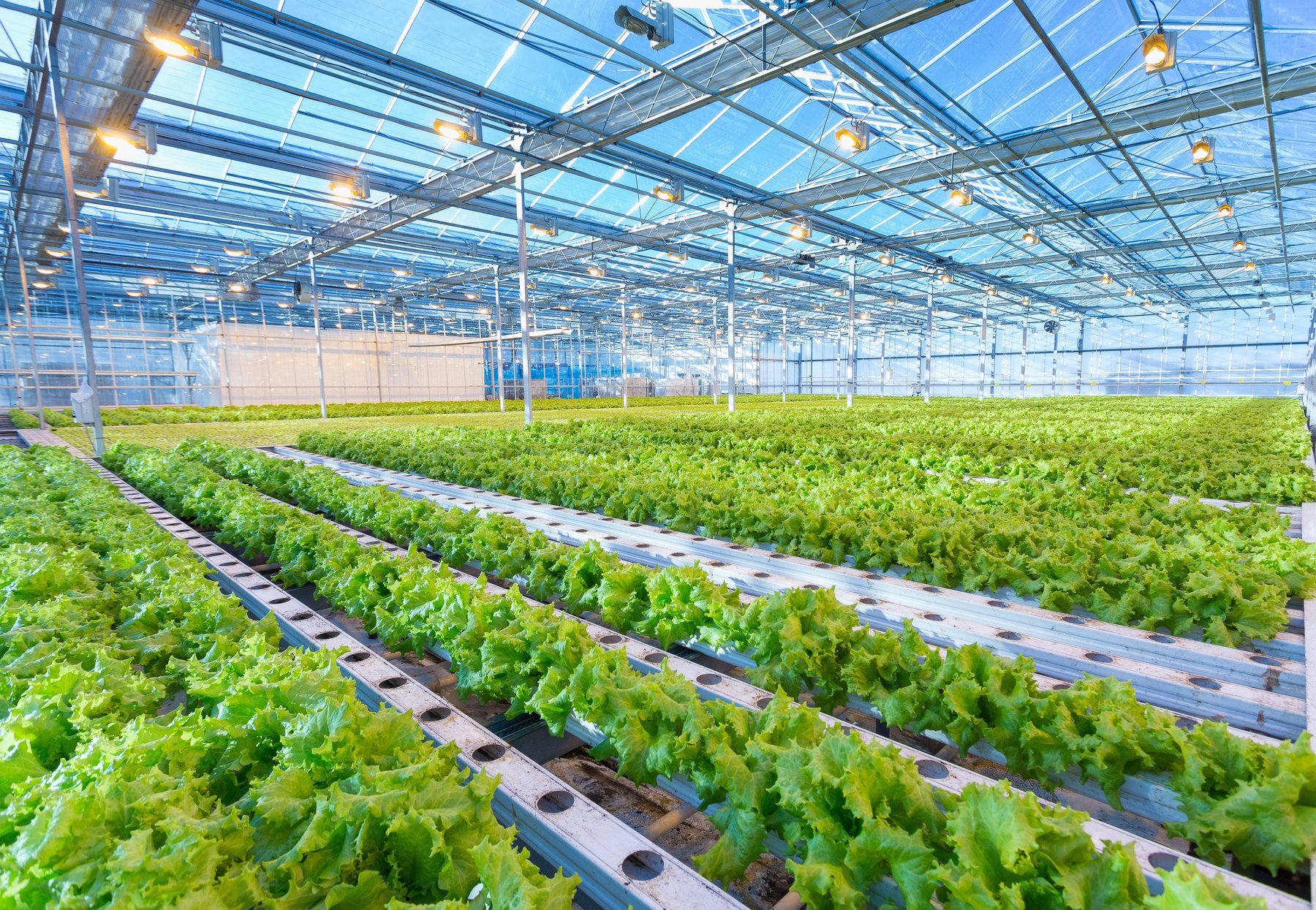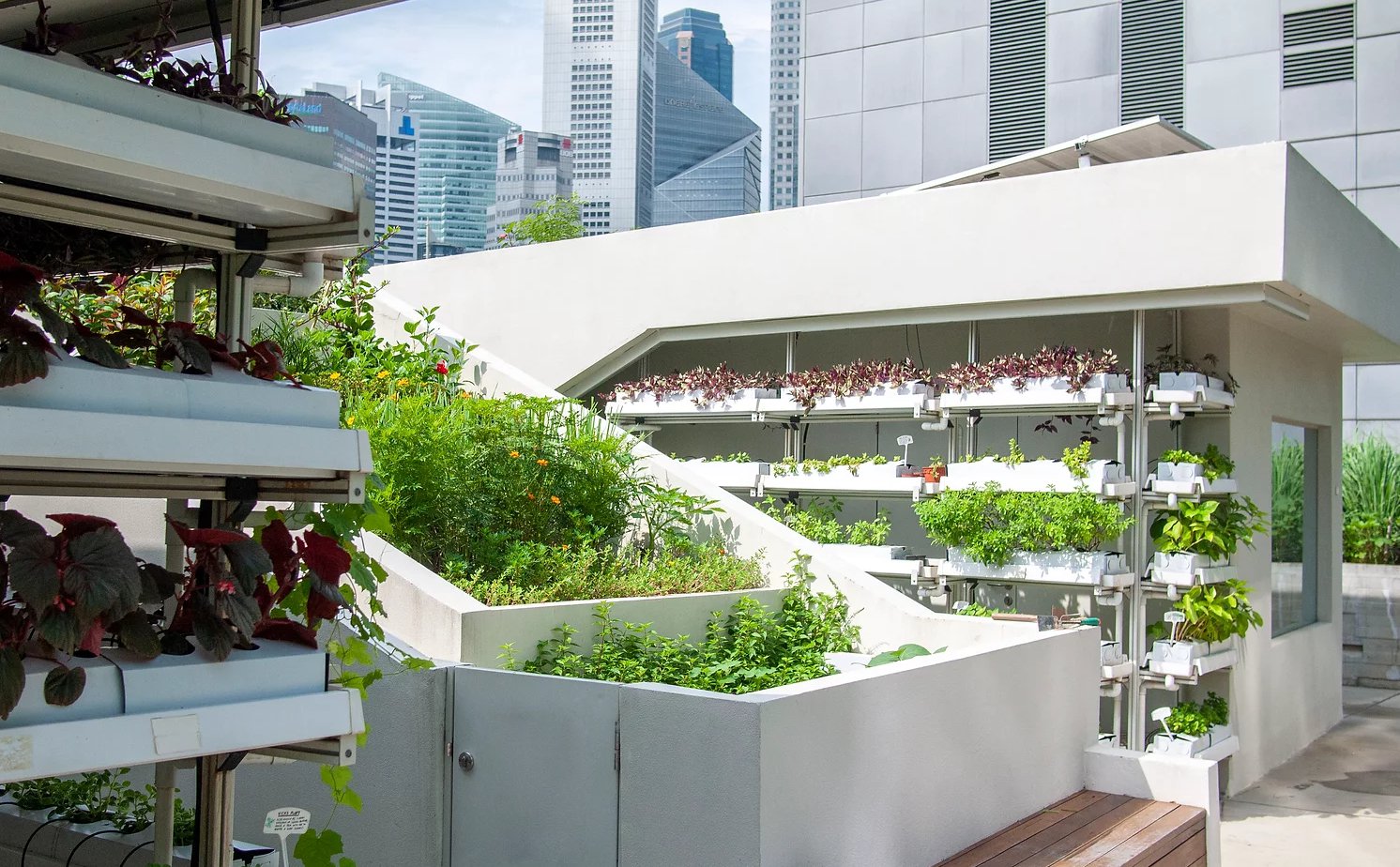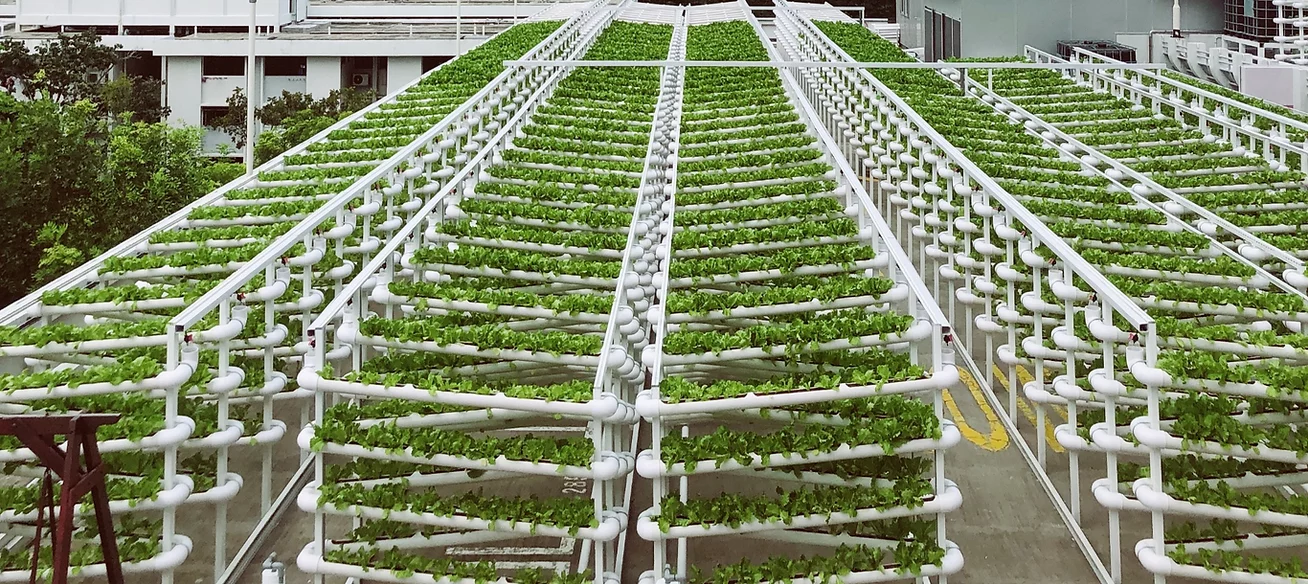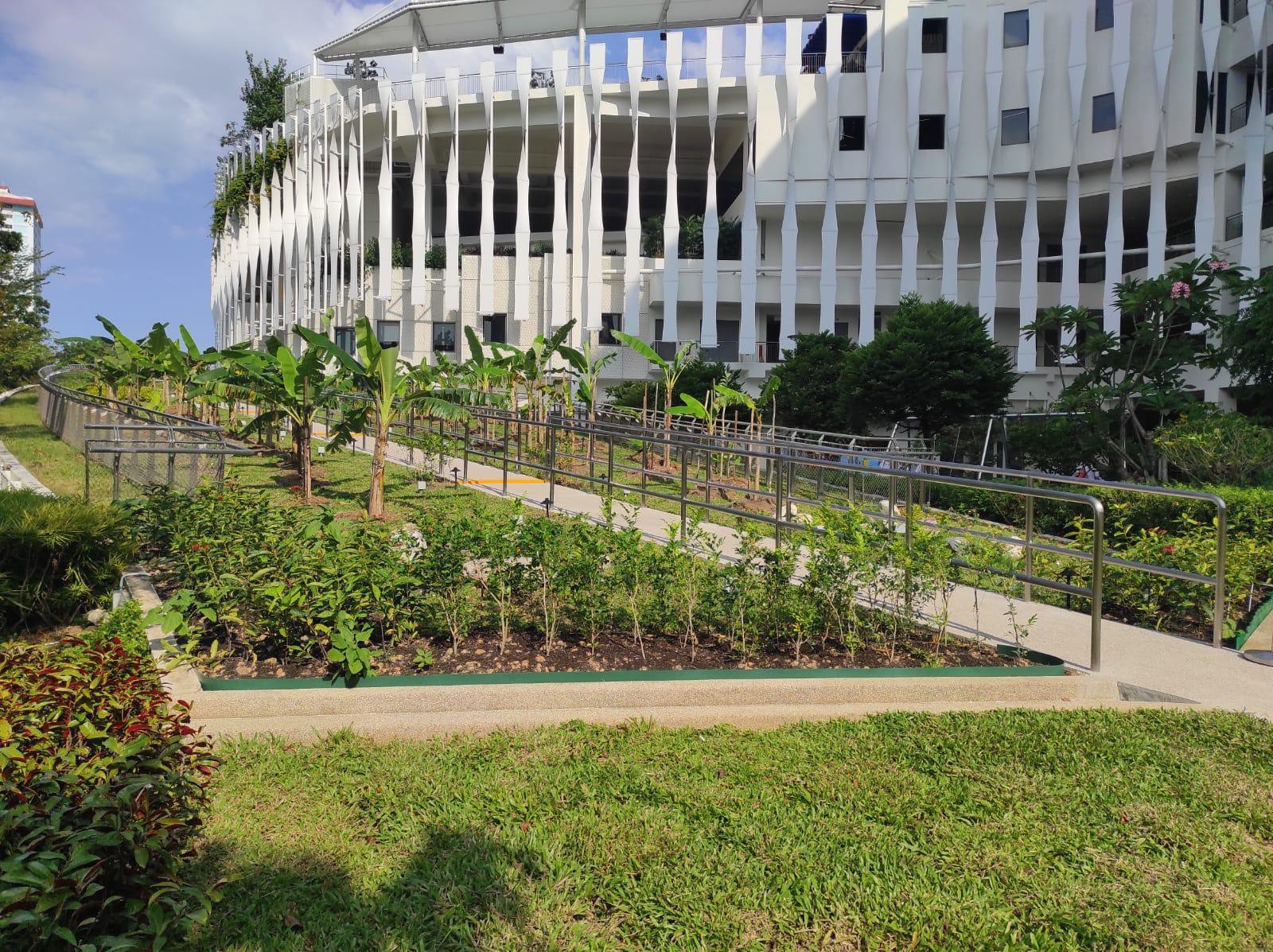
Future
Building Green Farming Technology
December 23, 2021
Urban Farming
Cities comprise both built and undeveloped spaces. Traditionally, urban built spaces were never considered for agricultural purposes, but with the constant rise in urban population density, finding and allocating suitable land for farming is impractical. Innovative farming ideas have to be used to overcome these land and resource constraints and grow food locally, even in dense urban areas. Techniques like vertical farming, rooftop farming, etc., help to tackle space constraints, while technology like LED lighting and recirculating aquaculture can help improve production within tight spaces like balconies, roof terraces, and even indoors. Moving production closer to where the consumption is, reduces the carbon footprint generated by the logistics and ensures food security for all citizens.

Singapore is working toward this goal through the ‘30 By 30’ initiative as part of the Singapore Green Plan. This initiative aims to build up the capacity and capability of Singapore’s agri-food industry and produce 30 percent of all nutritional needs locally and sustainably by 2030 through technology, policymaking and funding. Other initiatives like Edible Garden City act as champions of sustainable practices like growing your own food in the under-utilised spaces within communities. Since 2012, Edible Garden City has built more than 260 food gardens in Singapore, in notable locations such as Marina Bay Sands, Resorts World Sentosa, Raffles City rooftop, Fairmont Hotel, Six Senses, etc. Their design of Funan’s 5,000 sq-ft rooftop garden doubles as an actual farm for NOKA by the Spa Esprit Group, showing that farms no longer require large open spaces. The garden on this terrace and two other farms nearby (Queenstown and Raffles City Shopping Centre) supply over 130 varieties of plants like Okinawan spinach, purslane, red leaf hibiscus and ulam raja[1] to their 72-seater eatery.
Community Farming
Farmily is a similar initiative that believes in providing wholesome food and sustainably produced products for the community. They bring together farming, architecture and modern technology to promote food resilience by growing edibles in marginal spaces for the community. Initiatives like these work with the vision of practicing sustainable agriculture, educating the masses about local food production and boosting the local economy. Urban farming brings with it many other benefits such as availability of nutritious food, increased green space and community bonding.

Community farming can happen on different scales, from small-scale rooftop gardens in dense residential areas to larger-scale production. In the case of Thammasat University in Bangkok, their rooftop garden is the largest urban rooftop farm in Asia, at 22,000 sq-m (236,806 sq-ft). Thammasat University’s Green Roof tackles climate impacts by incorporating modern landscape architecture with traditional agricultural creativity. The combination of a green roof, urban farming, solar roof, and green public spaces bring elements of architecture and landscape design together seamlessly. The green roof resembles the stepped paddy fields that were once sprawled on the now-urbanised land. The usage of local plant strains restores the region’s biodiversity by attracting pollinator birds and insects and gives rise to a microclimate around the farm.

Heartbeat@Bedok, is a mixed-use seven-storey building envisioned as a key civic and community space for the Bedok town residents. Surrounded by lush greenery and landscaping throughout the site, an important sustainable design consideration was future-proofing for a potential community farm space which would bring residents of different backgrounds together, helping to improve social ties and cultivate community spirit. Since then, the community farm has been activated with a banana patch as a step towards making the space more eco-friendly.
The usage of unmanned technology in agriculture has been increasing rapidly in Asian countries like China, Japan and South Korea to increase yield with less manpower. Justin Gong, co-founder of XAG, a Guangzhou-based drone company that specialises in working with small-scale farmers, told Fortune magazine that his company’s drones help farmers monitor their crops, distribute seeds and fertilise more efficiently. These aerial devices are equipped with a spray nozzle that can handle both liquids and solids so that it can be used for agricultural purposes such as spraying herbicides or fertilisers, or for sowing seeds. Farmers no longer have to carry canisters of fertilisers and spray them across the field manually, improving their health and increasing yield.
Final Thoughts
The possibilities are endless when it comes to farming solutions in urban spaces. Nevertheless, effective change can be brought about only when we make policies and design future cities consciously to incorporate farming within communities. With agricultural farming technology booming with innovative ideas, the resource requirement for farming has shifted dramatically over the past few years. Incorporating these ideas in the early stages of the design process will help build more sustainable cities that grow their own food locally, leading to healthier citizens and cities, and lower the carbon footprint for food production. The solution to the climate, pollution and food crises in urban spaces will be one that brings together policymaking, technology and the design of the built environment.